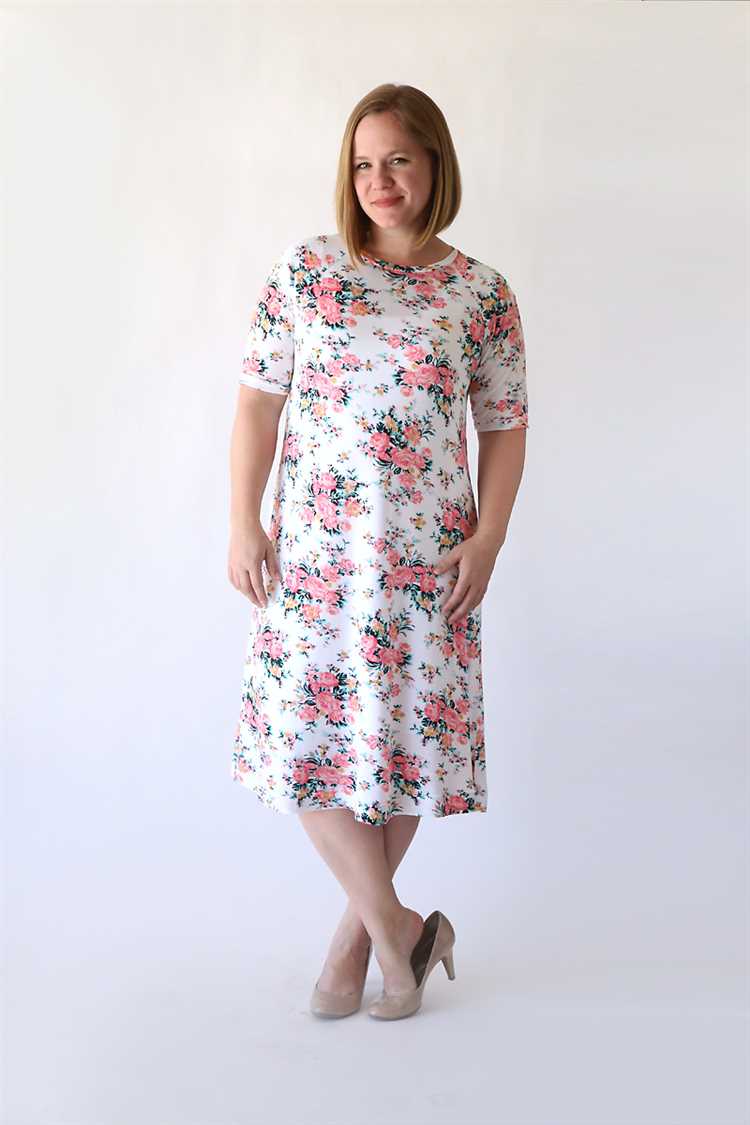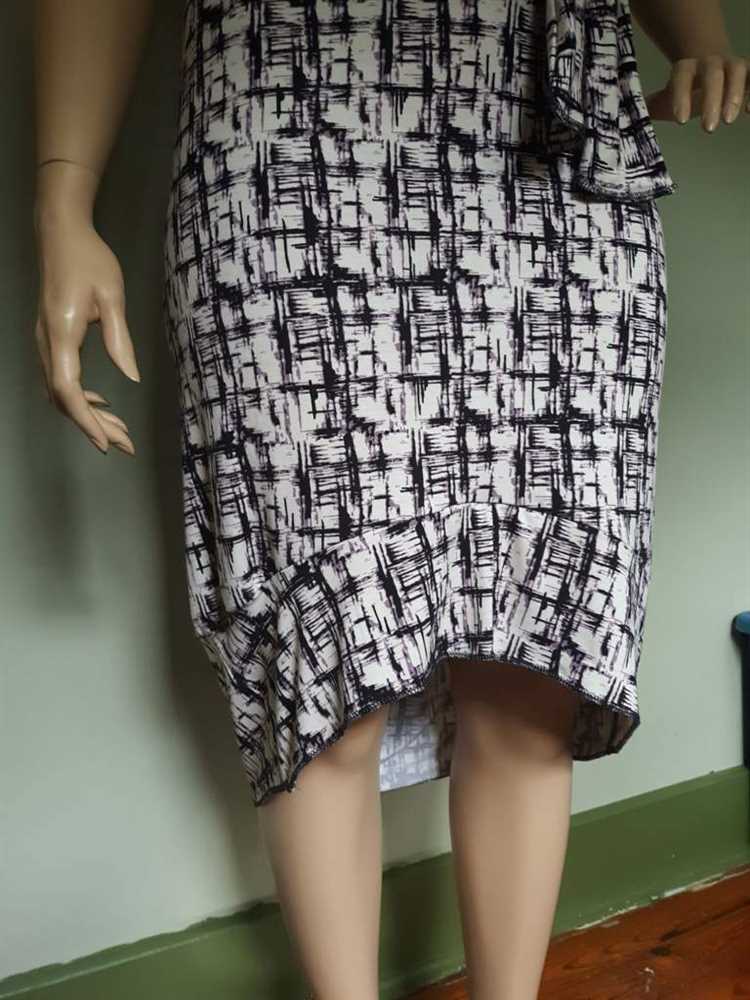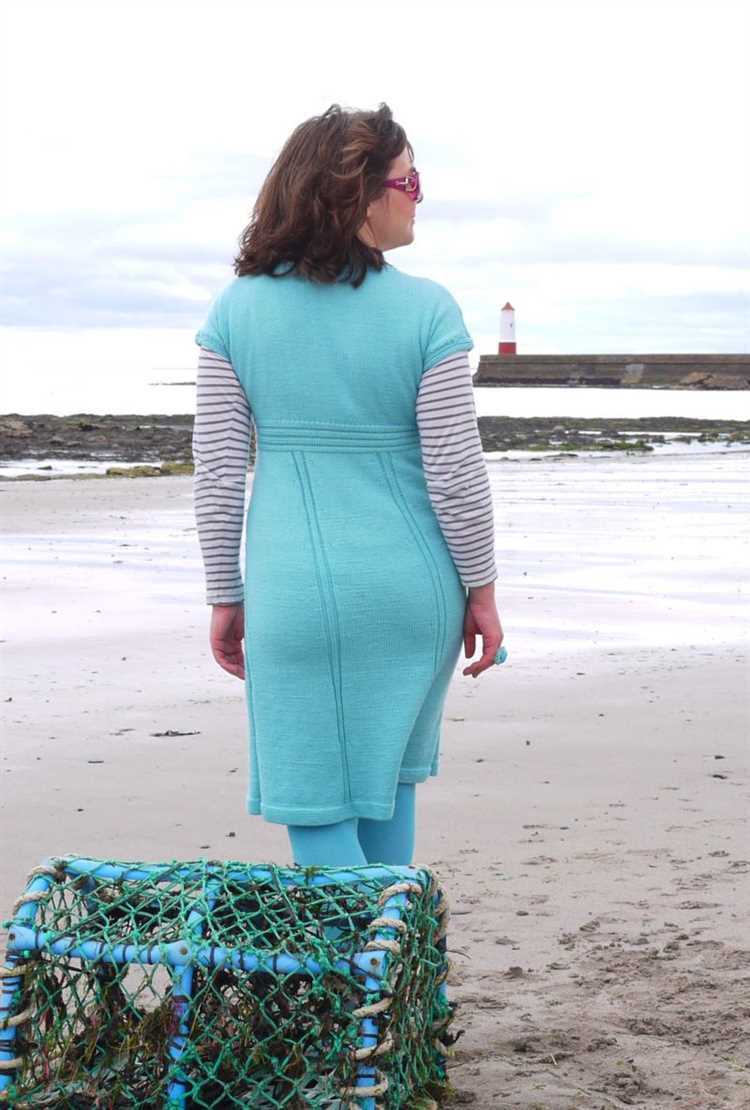Knit dresses are a versatile and comfortable option for both casual and formal occasions. However, if you find that your knit dress is too long for your liking, hemming it can help create a better fit. Hemming a knit dress requires a slightly different technique than hemming other types of fabric, as knits are stretchy and prone to unraveling. In this step-by-step guide, we will show you how to hem a knit dress like a pro, ensuring a clean and polished finish.
Before diving into the hemming process, it is important to gather the necessary materials. You will need a sewing machine, thread that matches the color of your dress, sharp fabric scissors, extra fine pins, a measuring tape, and a steam iron. Taking the time to prepare the materials in advance will make the hemming process much smoother.
Once you have your materials ready, the first step is to determine the desired length of your dress. Try on the dress and decide how much you want to shorten it. Use the measuring tape to measure the distance from the current hemline to the desired length. Mark this measurement using extra fine pins or temporary fabric marker.
Next, you will need to prepare the dress for hemming. Turn the dress inside out and lay it flat on a work surface. Smooth out any wrinkles or creases using a steam iron set to the appropriate temperature for your fabric. This will ensure that your hem is even and professional-looking. With the dress flat, fold the fabric up to the desired length and pin it in place using extra fine pins. Make sure the fabric is folded evenly all around the dress.
Gather the necessary supplies
- Fabric marker or chalk: This will be used to mark the hemline on your knit dress.
- Measuring tape: You’ll need this to measure the desired length of your dress.
- Pins: Pins will hold the fabric in place while you sew the hem.
- Scissors: These will be used to cut the excess fabric after hemming.
- Thread: Choose a thread color that matches your dress for a seamless finish.
- Sewing machine or needle: You can choose to hand sew the hem or use a sewing machine for faster results.
- Steam iron: An iron will help to press the hem and give it a crisp appearance.
Measure and mark the desired length
Before you start hemming your knit dress, it’s important to measure and mark the desired length. This will ensure that your dress is hemmed precisely to your desired length and looks professional.
Here’s a step-by-step guide on how to measure and mark the desired length:
- Put on the knit dress and stand straight in front of a mirror.
- Grab a measuring tape and hold it at the waistline or desired length of the dress.
- Pull the measuring tape down slowly, letting it follow the contour of your body, until you reach the desired length.
- Keep the measuring tape in place and look in the mirror to ensure that the dress falls at the desired length.
- Use a fabric marker or chalk to mark the desired length on the dress.
It’s important to note that when measuring and marking the desired length, you should keep in mind the type of hem you want. If you’re planning to sew a rolled hem, for example, you may need to leave some extra length for the hem allowance.
Once you have marked the desired length, you’re ready to start hemming your knit dress!
Prepare the dress for hemming
Before you begin hemming your knit dress, make sure you have the following materials:
- Knit dress
- Tape measure
- Pins
- Scissors
- Sewing machine or needle and thread
- Iron
Once you have gathered all the necessary materials, follow these steps to prepare your dress for hemming:
- Try on the dress to determine the desired length. Stand in front of a mirror and adjust the dress to the desired hemline.
- Use a tape measure to measure the distance from the bottom of the dress to the desired hemline. Take note of this measurement.
- Take off the dress and lay it flat on a table or ironing board.
- Using pins, mark the desired hemline by folding the fabric up to the measured distance from step 2. Make sure the pins are evenly spaced and secure.
- With a pair of scissors, carefully trim off any excess fabric below the pinned hemline. Take care not to cut the dress too short.
- Once you have cut off the excess fabric, remove the pins and unfold the hem. Your dress is now ready for hemming.
Before proceeding with the hemming process, it is recommended to iron the dress to ensure a smooth and even hemline. Press the folded hem with a hot iron, following the manufacturer’s instructions for ironing knitted fabric.
Choose the right needle and thread
When it comes to hemming a knit dress, it is important to choose the right needle and thread to ensure the best results. Using the correct needle and thread will help prevent any damage to the fabric and ensure that the finished hem looks professional.
Needle:
- Use a ballpoint needle designed specifically for knit fabrics. These needles have a rounded tip that slides between the fabric fibers rather than piercing them, minimizing the risk of snags or runs.
- Opt for a size 70/10 or 80/12 needle, depending on the weight and thickness of your fabric. Smaller sizes are suitable for lightweight knits, while larger sizes are better for heavier fabrics.
Thread:
- Choose a thread that matches the color of your fabric. Alternatively, you can use a slightly lighter or darker shade if you prefer a subtle contrast.
- Use a polyester thread, as it has a bit of stretch that is ideal for knit fabrics. Polyester thread is also more resistant to shrinking and fading compared to cotton thread.
Tips:
- Always test your needle and thread on a scrap piece of fabric before hemming the actual dress. This will help you determine if the needle glides smoothly and if the thread blends well with the fabric.
- Consider using a walking foot if you’re experiencing difficulties with the fabric feeding evenly under the presser foot. A walking foot helps to prevent stretching and puckering of the knit fabric during stitching.
By choosing the right needle and thread, you will be well on your way to achieving a professional-looking hem on your knit dress.
Thread the needle and knot the thread
Once you have chosen the appropriate thread color for your knit dress, it’s time to thread the needle. Follow these steps to do so:
- Choose the right needle: Select a needle with a small eye that is suitable for your thread. Make sure it is sharp enough to easily push through the fabric.
- Thread the needle: Cut a length of thread that is comfortable for you to work with and trim the ends to prevent tangling. Hold the end of the thread and guide it through the needle’s eye, leaving a tail of thread on one side.
- Knot the thread: Take the two ends of the thread and tie them together in a double knot at the end opposite the needle. This will prevent the thread from slipping through the fabric as you sew.
Make sure your thread is securely knotted before moving on to the next steps. You are now ready to start hemming your knit dress like a pro!
Start hemming from one side
Once you have your dress prepared and the required tools at hand, you are ready to start hemming. Begin by deciding which side of the dress you want to start from. This can be the left or right side, depending on your personal preference.
1. Measure the desired length:
- Using a measuring tape, measure the length you want the dress to be after hemming. Make sure to take into account any additional length needed for folding and stitching.
- Mark this length with fabric chalk or pins on the side of the dress you have chosen to start hemming from.
2. Fold the hem allowance:
- Measure and mark the desired hem allowance on the inside of the dress. This is the amount of fabric that will be folded under during the hemming process.
- Using an iron, press the fabric along the marked line to create a crease.
3. Pin and secure:
- Start pinning from the side you have chosen to hem first.
- Align the raw edge of the fabric with the folded hem allowance, making sure they are even.
- Secure the folded hem in place with pins, placing them approximately 2-3 inches apart.
4. Machine-stitch the hem:
- Using a sewing machine, set a straight stitch and begin stitching along the folded hem, removing the pins as you go.
- Keep the fabric taut while sewing to ensure a clean and even stitch.
- Continue sewing until you reach the end of the hem, backstitching at the beginning and end to secure the stitches.
5. Repeat on the other side:
- Once you have completed hemming one side of the dress, repeat the same process on the opposite side.
- Ensure that both sides are hemmed to the same length for a balanced and professional finish.
By following these steps, you will be able to hem your knit dress seamlessly. Take your time and pay attention to detail for the best results. Happy hemming!
Use the right stitching technique
When hemming a knit dress, it’s important to choose the right stitching technique to ensure a professional-looking finish that won’t stretch out or become distorted over time. The following techniques are commonly used for hemming knits:
- Double needle stitching: This technique uses a double needle on the sewing machine to create two parallel rows of stitching on the hem. It creates a stretchy hem that looks neat and professional.
- Twin needle stitching: Similar to double needle stitching, twin needle stitching creates two parallel rows of stitching. However, it uses a single needle with two threads, which makes it easier to set up on most sewing machines.
- Zigzag stitch: The zigzag stitch is a common choice for hemming knits as it allows the fabric to stretch while still providing a secure finish. A narrow zigzag stitch is usually used for this purpose.
- Blind hem stitch: The blind hem stitch is often used for woven fabrics, but it can also be used for knits. It creates an almost invisible hem by folding the fabric and stitching it with a special stitch that catches only a few threads on the front side of the fabric.
Before starting to stitch, make sure to test the stitching technique and stitch length on a scrap piece of fabric to ensure that the stitches work well with the particular knit fabric you are hemming.
Remember to use a stretch needle or a ballpoint needle when sewing knits to prevent skipped stitches and snags. Also, don’t forget to finish the raw edge of the hem using either a serger or a zigzag stitch before hemming.
Finish off the hem and try on the dress
Once you have sewn the hem, it’s time to finish it off and try on the dress. Follow these steps:
- Trim the excess fabric: If there is any excess fabric extending beyond your hem, trim it off. Be careful not to cut the actual hem that you’ve sewn.
- Press the hem: Use an iron to press the hem, making it more crisp and neat. This will give your dress a professional finish.
- Try on the dress: Put on the dress and make sure it fits you well. Check the length and see if it matches your desired look. If needed, make any adjustments to the hem length.
- Finalize the hem: Once you are happy with the fit and length, stitch the hem in place using a longer stitch length. This will help prevent the hem from popping or stretching when you wear the dress.
Now that you have completed hemming your knit dress, it’s ready to be worn! Try styling it with accessories to complete your look and enjoy your new custom-made garment.
FAQ:
What is hemming?
Hemming is a sewing technique used to finish the raw edge of a garment by folding it over and stitching it in place.
Why is hemming important?
Hemming is important because it gives your garment a polished and professional finish. It also helps to prevent fraying and keeps the fabric in place.
What tools do I need to hem a knit dress?
You will need a measuring tape, fabric scissors, pins, a sewing machine or needle and thread, and a iron.
Can I use a sewing machine to hem a knit dress?
Yes, you can use a sewing machine to hem a knit dress. Just make sure to use a stretch stitch or a narrow zigzag stitch to accommodate the stretchiness of the fabric.
What is the best technique for hemming a knit dress?
The best technique for hemming a knit dress is to use a twin needle. This creates two parallel rows of stitching on the right side of the fabric and a stretchy seam on the wrong side.


